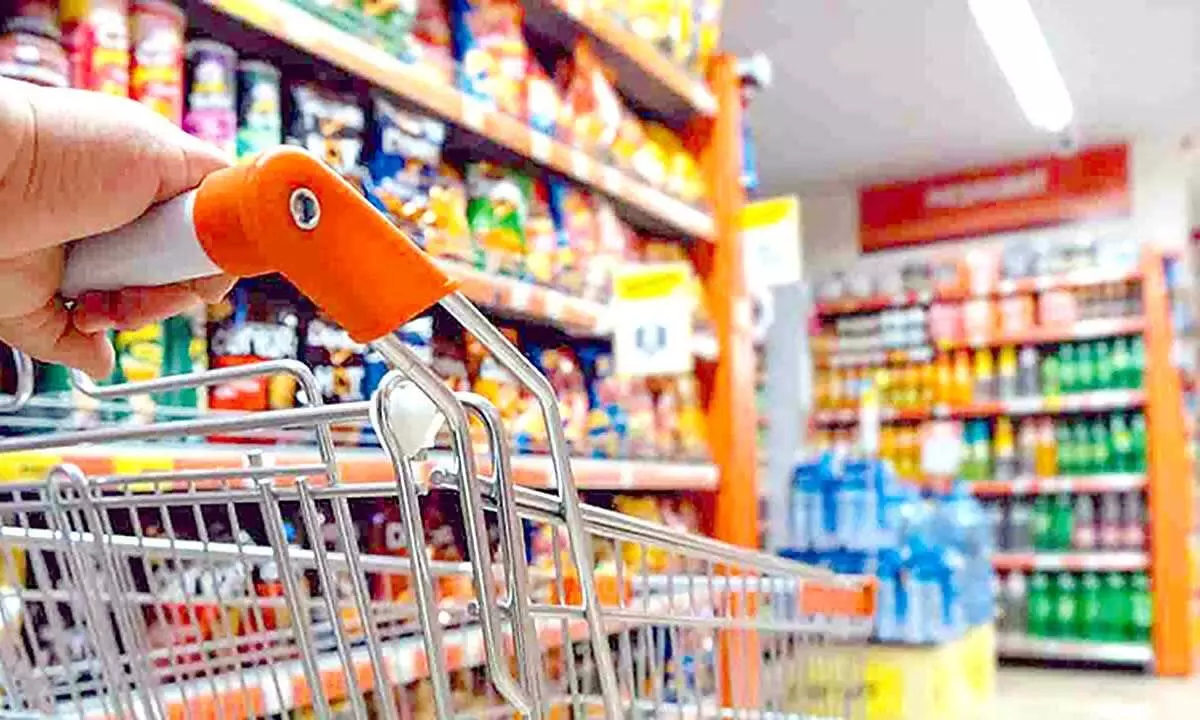FMCG industry hopes to recover lost margins in 2023
They are ‘cautiously optimistic’ and expect the rural market, to bounce back in 2023 riding on a good harvest season, govt impetus, and improvement in farm income
image for illustrative purpose

• A surge in raw material costs following the war in Ukraine pushed several FMCG companies to resort to Shrinkflation to ensure there is no impact on the fragile recovery in demand
• The industry has seen a double-digit price hike in 2022
• According to NielsenIQ, the FMCG industry witnessed an overall volume decline of 0.9% in the Sept quarter compared to the preceding three months
• High inflation and rural slowdown continue to be the areas of concern but commodity prices have started easing
Shrinkflation or reducing the size or quantity of a product while keeping the price unchanged was a little-known term in India but a surge in raw material costs following the war in Ukraine pushed several FMCG companies to resort to such a practice to ensure there is no impact on the fragile recovery in demand. And when they exhausted all options, FMCG (Fast Moving Consumer Goods) companies raised prices.
Now, they are hoping to recover the lost ground in 2023, with a recovery in margins and volumes, especially from the distressed rural areas amid softening commodity prices. FMCG companies are "cautiously optimistic" and expect the rural market, which accounts for more than one-third of the overall sales, to bounce back in 2023 riding on a good harvest season, government impetus, and improvement in farm income. Besides, they expect the tailwinds of emerging channels like modern trade and e-commerce driving urban demand, and from a rise in premium discretionary categories.
Besides, the FMCG industry, which witnessed a seismic shift in omnichannel growth with sales significantly outpacing in-store growth across metro cities, expects the trend to continue and the strategy will be to focus on product and consumer experience innovation, prioritising profitable channels. Just when demand seemed to be recovering, a war in Ukraine sent commodity prices shooting up early this year. To tackle high raw material costs, several FMCG companies downsized product packets while keeping the price unchanged. Dubbed 'shrinkflation', this effectively means consumers are paying the same for less of the product. But with Covid infections receding and the economy opening up, the demand started to recover in the last quarter of 2022. And FMCG companies, who were severely hit during the previous two years because of the pandemic, are hoping things will improve in 2023. "We are cautiously optimistic about the year 2023 and hope to see a revival in rural demand in 2023. The urban demand growth will continue to be driven by emerging channels like modern trade and e-commerce," Dabur India CEO Mohit Malhotra said.
The industry has seen a double-digit price hike in 2022. A recent report by data analytics firm NielsenIQ said the FMCG industry witnessed an overall volume decline of 0.9 per cent in the September quarter compared to the preceding three months. Emami Vice Chairman Mohan Goenka said high inflation and rural slowdown continue to be the areas of concern but commodity prices have started easing. "Though from October onwards, we are witnessing easing of commodity prices, however, its benefits can only be realised by the next financial year. We expect a rural bounce back by 2023 riding on a good season, government impetus and improvement in farm incomes," he said. Britannia Industries Executive Vice-Chairman & Managing Director Varun Berry said post-pandemic demand has stabilised quite well. However, on the cost and profitability front, commodity inflation remained on the boil on the back of rising inflation in flour and milk products, he added.
"In general, commodity prices are not softening right now. However, we do hope that they should come under control going forward. The only commodity which is softening right now is palm oil while wheat prices are on the rise and sugar has been stable. Hopefully, as we move forward, things should come under control soon," he said. In 2022, the FMCG industry had the higher contribution of new launches across key categories as companies introduced new pack sizes amid inflationary pressures. PepsiCo India President Ahmed ElSheikh said, "as we move forward, the strategy will be to focus on product and consumer experience innovation, prioritising profitable channels, diligently managing SKUs, and driving execution and productivity across the system."
This decade is a decade of India and PepsiCo is focused on building capabilities, availability and expanding penetration while driving category innovation, he said. According to Tata Consumer Products Ltd MD and CEO Sunil D'Souza, two key trends that gathered pace during the pandemic were increased focus on health and wellness, and digital adoption and those will continue in the FMCG sector. "We think these trends are here for the long term and this will continue to influence our innovation agenda as well as our marketing and sales and distribution," he said.

